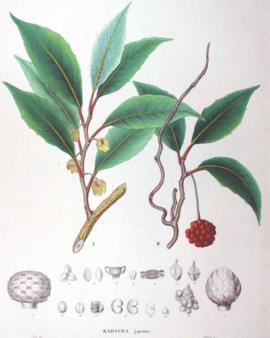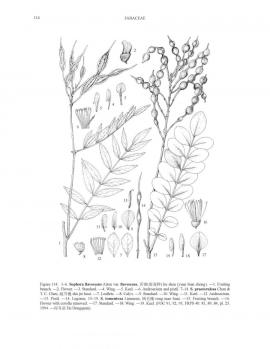Search
Primary tabs
Sekishu is a glossy fine quality paper; it is considered as very long-lasting and resistant to insect attack thanks to the use of "medecines" added to the dyes. It is used for writing documents and for printing. The colored papers are used in the manufacture of book-bindings, wallpapers and for lining fusumas.
In Ehime Prefecture kozo will be replaced by mitsumata during the Meiji period (1868-1912); it is called Kairyo hanshi ie improved paper.
In Ehime Prefecture kozo will be replaced by mitsumata during the Meiji period (1868-1912); it is called Kairyo hanshi ie improved paper.
Origin:
Japan
Danshi (or michinoikugami – “Paper from the North”) was made across Japan during the Edo period (1603-1868) but its production would have started during the Nara period (710-794) or Heian period (794-1185); the first papers were made from fibers of spindle tree (Eonymus sieboldiana Blume) and the kozo fibers replaced them during the Heian period.
Echizen (Fukui Prefecture) was a major production center but the northern region of Tohoku dominated this manufacturing; it was done in the Abukuma valley in the south and at Hiraizumi, north of Shiroishi which was the center of the paper industry for many centuries in Kamikawasaki in Adachi county (Fukushima prefecture); Adachi seems to have been the first michinokugami production place at the end of the tenth century. Its production will be exported in many parts of Japan.
In the Heian period the paper is popular in the court for writing. It has a wrinkled texture, shape adopted during the Edo period. It is used during ceremonies to wrap gifts and as luxury wrapping paper.
Dimensions: 47 / 61cm
Origin:
Japan
Local scripture:
檀紙
Synonym:
Michinoikugami 陸奥紙
Imitation japonaise du xuanzhi. Nom donné pour le différencier du vrai papier chinois appelé « hongasen » ou « senshi ». Les dimensions varient entre 96/180cm, 84/150cm, 69/135cm. Il est généralement produit avec des fibres de kozo.
La production augmente dans la seconde moitié du 20e siècle. Les régions concernées sont les préfectures de Tottori, Ehime, Yamanashi.
Origin:
Japon
Nom ancien pour désigner le papier de kozo généralement fabriqué par la méthode du tamezuki.
Origin:
Japon
Local scripture:
穀紙
Botanical name:







